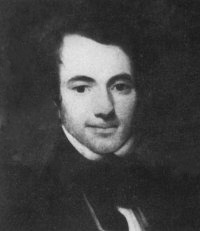Alfred Thomas Agate
| Alfred Thomas Agate | |
|---|---|

Self-portrait
|
|
| Born |
February 14, 1812 Sparta, New York |
| Died | January 5, 1846 (aged 33) Washington, D.C. |
| Nationality | American |
| Known for | Painting, Miniature |
Alfred Thomas Agate (February 14, 1812 in Sparta, New York – January 5, 1846 in Washington, D.C.) was a noted American artist, painter and miniaturist.
Agate lived in New York from 1831 to 1838. He studied with his brother, Frederick Styles Agate, a portrait and historical painter. He later went on to study with Thomas Seir Cummings. By the late 1830s, Agate was exhibiting his work at the National Academy of Design in New York, and established himself as a skilled painter in oils. He was elected into the National Academy of Design as an honorary member in 1840.
Agate drew landscapes, portraits, and scientific illustrations. For much of his landscapes, Agate used a camera lucida, a device which projected the scene onto a piece of paper for purposes of tracing.
Agate created many artworks during his service with the United States Exploring Expedition of 1838–1842 under Charles Wilkes. He was especially good at botanical illustrations, and was the designated portrait and botanical artist of the expedition.
The United States Exploring Expedition passed through the Ellice Islands and visited Funafuti, Nukufetau and Vaitupu in 1841. During the visit of the expedition to the Ellice Islands (now known as Tuvalu) Alfred Thomas Agate recorded the dress and tattoo patterns of men of Nukufetau.
Agate created the first known picture of Mount Shasta. Agate contributed more than half (173 of 342) of the sketches and paintings reproduced as lithographs illustrating the five volumes of the expedition's reports. He sketched the Oregon Territory, including a look into a Chinook Lodge, an Indian Burial Place, an Indian Mode of Rocking Cradle, and a picture of the wreck of one of the expedition's sailing ships at the mouth of the Columbia River.
...
Wikipedia
